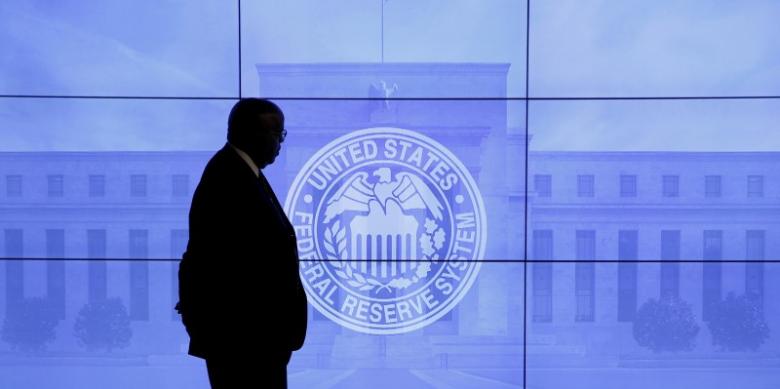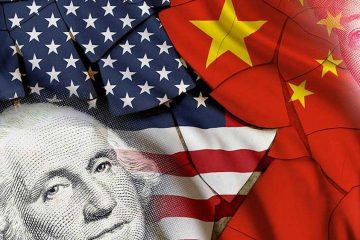What the Fed Interest Rate Increase Will Mean For You This Time

It was, once again, one of the worst kept secrets in economic history.
Just like it did a year ago, the Federal Reserve on Wednesday sent its key short-term interest rate up by a quarter of a percentage point. In the days before the announcement, traders had put the odds of a rate hike at 100%, according to Bloomberg data on futures markets.
It was only the second time the Fed has increased rates since the U.S. central bank dropped its key lending level all the way down to zero during the financial crisis.
A year ago, Fortune made some predictions about how the stock market, the lending market, and the world in general would change following that year’s hike, Janet Yellen & Co.’s first interest rate increase in nine years. (We also took a just-for-fun look at all the ways the world had changed since the last time rates were increased. Flip phone, anyone?)
How did we do on last year’s predictions? Not great.
Before the explanation, an excuse: It wasn’t entirely our fault, or even mostly our fault, that our projections didn’t pan out. A year ago, most economists thought the Fed’s December 2015 increase would be the first of many in a row. And there was good historical precedent for that. The Fed in the past has tended to follow one interest rate move with a number in relatively quick succession. Instead, it was one and done, until today. As a result, lending markets and the stock market didn’t react like we expected them to.
Despite our errors, looking back at what happened a year ago may be able to tell us what to expect for 2017 and beyond. And this time, the past year might actually be a good predictor of what may happen in the next 12 months. On Wednesday, the Fed board members indicated that interest rates were likely to rise three times next year. But most people think the Fed will go slower than that. Futures markets are still pointing to just two rate increases next year, with the next hike not coming until June. Once, again, we think interest rates will go up faster than that. We’re 100% sure of it.
Here’s a look back at our predictions from a year ago, and some slightly more cautious predictions for next year:
Interest Rates
While most economists thought short-term interest rates would end 2016 at 1.2%, we said rates would go much higher than that, perhaps as high as 2.6%. Our reasoning: When rates do rise, investors have historically underestimated has far and how fast they will go up. Not this time apparently. On Wednesday, the Fed raised its key short-term lending rate to a range of 0.50%-to-0.75%, or about two percentage points below where we said it would be.
The Fed members also predicted they would raise interest rates three more times to at least 1.25% by the end of 2017. Yes, markets are skeptical of that, as we mentioned above. Still, if history is any guide this time, rates will be even higher than that by this time next year. What’s more, Trump’s plans to stimulate economic growth with tax cuts and infrastructure spending should boost interest rates as well. But you’ve been warned: We’ve been wrong before.
Stocks
Since we thought interest rates would rise faster than expected, Fortune‘s prediction was that 2016 would be a pretty miserable year for stocks. It wasn’t. We cited a Goldman Sachs report that predicted stocks could fall as much as 10% in the first year after the Fed’s increase. They didn’t.
Instead, the stock market in general has been up in the past year, though much of the rally has come since Donald Trump was elected. The S&P 500 is up nearly 11% this year.
Where to invest? We said the best bet was technology stocks. And that was a good call. The Technology Select Sector SPDR, an exchange trade fund that tracks technology stocks is up just over 14% in 2016.
Less good was our call on bank stocks. A lot of market strategists were pointing to bank stocks as the sector that would benefit the most from interest rate increases, since higher interest rates would boost lending profits. We didn’t buy it. Historically, bank stocks tended to underperform when rates rise and we said they would again. In fact, bank stocks have risen nearly 22% this year. Of course, once again, a lot of that has been since Trump has been elected, on the assumption that the new president will reduce regulation, something that few people saw coming a year ago.
As for 2017, rising rates will again weigh on the market. Stocks fell after the Fed’s decision to raise rates,with the Dow Jones Industrial Average ending the day down 119 points. But the good news is that Trump has promised measures that are likely to push up growth, and even more likely to boost inflation and consumer spending. Those trends would be good for stocks, particularly those of retailers.
Bonds
Bond prices fall when interest rates rise. A year ago, we thought that after years of gains in bond prices, 2016 could be worse than usual. We said long-term bond prices could fall as much as 10%. Once again: Didn’t happen.Bonds did do worse than stocks in 2016, but it was hardly a bloodbath. Overall, the Barclay’s U.S. Aggregate bond index is up nearly 2.2% this year. Long-term Treasury bonds rose, but not as much as the aggregate index. The 10-year Treasury bond is up 0.3% in 2016. The better bet was long-term corporate bonds. They are up just over 5% in 2016. Who knew? Not us.
Bank Accounts
When interest rates rise, savers should be among the main beneficiaries. A year ago, there was a debate going on as to whether banks would pass along interest rate increases to their customers. Interest rates on savings accounts, and especially checking accounts, had been at or close to zero, or really negative when you factor in ATM fees. We argued that competition would drive up the rates you could get on checking accounts.But that didn’t really play out. A year later, the average rate on a savings account is 0.11%, and checking accounts still mostly pay nothing. So don’t be surprised if this week’s interest rate hike doesn’t really impact your bank account either.
Borrowing
We said borrowing rates weren’t likely to go up all that much. The spread between credit card rates and the Fed’s interest rate was already quite large. And mortgage rates were tied to long-term interest rates, which tend to rise when the economy improves, not necessarily when the Fed increases interest rates.This was one prediction we got right. Credit card and mortgage rates did go up, but not much. Credit card rates did turn out to be more tied to interest rates than expected. And NerdWallet predicts that credit card lending rates will go up again in the next year, with the average house hold paying around $ 18 more in interest a year.
Mortgage rates have jumped to to 4.1% on a 30-year fixed mortgage from 3.5% a year ago. That’s not much, but it does show that home loans are apparently more sensitive to interest rate hikes than we and others thought. So expect more increases, even if they’re modest, in 2017.

